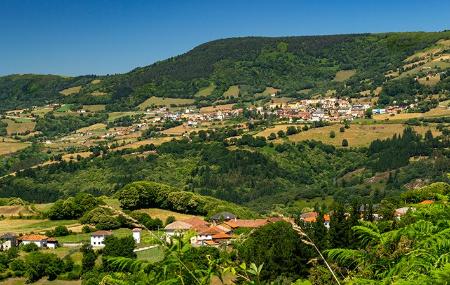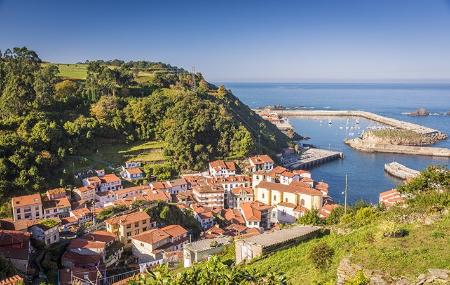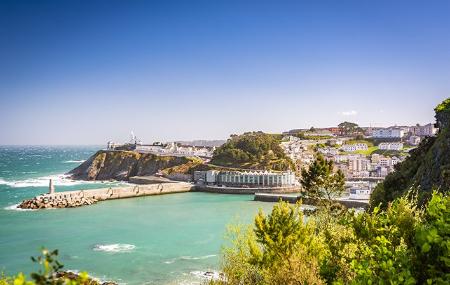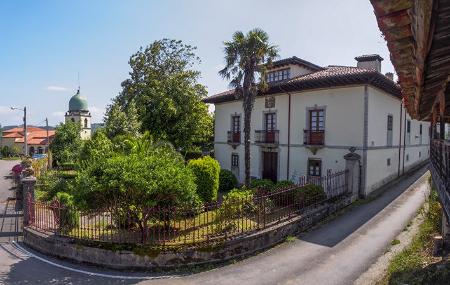Info
It carries history in its name. The vaqueiros de alzada were a social group that marked the life of this region since ancient times with their nomadic sense of existence. The cattle imposed their times and places. In the summer, life was spent in the mountain passes and grazing areas of the mountain passes, and with the arrival of cold weather, the return to the winter villages. Their way of life and the fact that they were constantly related to each other led them to live excluded from the social structure of the groups settled in the agricultural areas. The Vaqueiros are still identified today by their surnames and even by their physical features, and their culture is one of the great intangible heritages of the region that adopts their name. Every year, at the end of July, the Fiesta Vaqueira is held in the braña of Aristébano, declared a festival of tourist interest.
The Comarca Vaqueira is a vast expanse of land, thanks to the fact that some of its constituent councils are among the largest in Asturias, and precisely its size makes it an area with a bit of everything: coast and inland, and inland, mountains, sierras, valleys, rivers, lush forests... in fact it is a summary of all the variety and richness of Asturias, with a unique personality.
In the coastal area, both Cudillero and Valdés provide an intense seafaring and fishing culture that crystallises in two seafaring villages of great beauty: Cudillero, known as the Villa pixueta due to the linguistic slang used by its sailors, and Luarca/Ḷḷuarca, called the Villa Blanca due to the colourfulness of its buildings. The village has a unique amphitheatre in Asturias, due to its layout and the colourfulness of its houses, from which still today hang the famous curadillos, small sharks drying at the door of the fishermen's houses, and the views from its lighthouse must be experienced. Luarca/Ḷḷuarca, famous for being the birthplace of Nobel prize winner Severo Ochoa, has similarities in physical configuration to Cudillero, and the views from its lighthouse are also impressive. Both have important examples of Indian and civil architecture. As far as beaches are concerned, both Cudillero and Valdés have sandy beaches, rocky areas and cliffs of great beauty, and as far as the capes are concerned, both Vidio in Cudillero and Busto in Valdés are worth a visit, without forgetting the Barayo Nature Reserve and the Esva river gorges in the case of the latter.
Inland, the Vaqueira region dazzles us with the gold of Tineo, which already did the same for the Romans, who found in the west of Asturias an inexhaustible source of resources to sustain the imperial apparatus. It also surprises us with its Exemplary Villages such as Tuña, birthplace of General Riego, or Navelgas and its batting tradition, or with the historic centre of the town of Tinéu and its museum of Sacred Art. Tineo is good gastronomy, unique like the Chosco, it is an ecological pantry, it is a mining past, it is prehistory like the one that surfaces in the dolmen of Merillés...
Allande, also enormous, exhibits castreña culture in San Chuis, the best western Romanesque in Santa María de Celón, architecture and Indian tradition in Pola, the capital, which also has examples of medieval palaces like the one in Cienfuegos, and which delights us with excellent homemade recipes... Allande is dispersed in farmhouses and livestock, in friendly landscapes and affable people.
Salas is one of the five councils with a medieval capital, which grows around the Castle of Valdés Salas, cradle of the founder of the University of Oviedo and Inquisitor General. Between the carajitos of the professor and the salmon of the Narcea, Salas shows its condition of Jacobean route, of Indian villages such as Malleza and Mallecina, and of pedestrian path on the banks of the Narcea.
A region with a medieval, livestock, transhumant, Indian, mining, castreña, Roman stamp... A region of hospitable people, of healthy weeping, of prodigal nature and endless landscapes.
The territory crossed by the vaqueiros covers five councils in western Asturias: Allande, Cudillero, Salas, Tineo and Valdés. Some of them, such as Tineo, Allande and Valdés, are among the largest in the whole of Asturias.
Map
What to see
- Villa de Luarca/Ḷḷuarca, Cabo Busto and Braña de Aristébano.
- Natural Reserve of Barayo
- Village of Cudillero and Cape Vidio.
- Village of Salas and Cornellana.
- Town of Tinéu, Tuña and Navelgas.
- Pola de Allande and San Emiliano.






